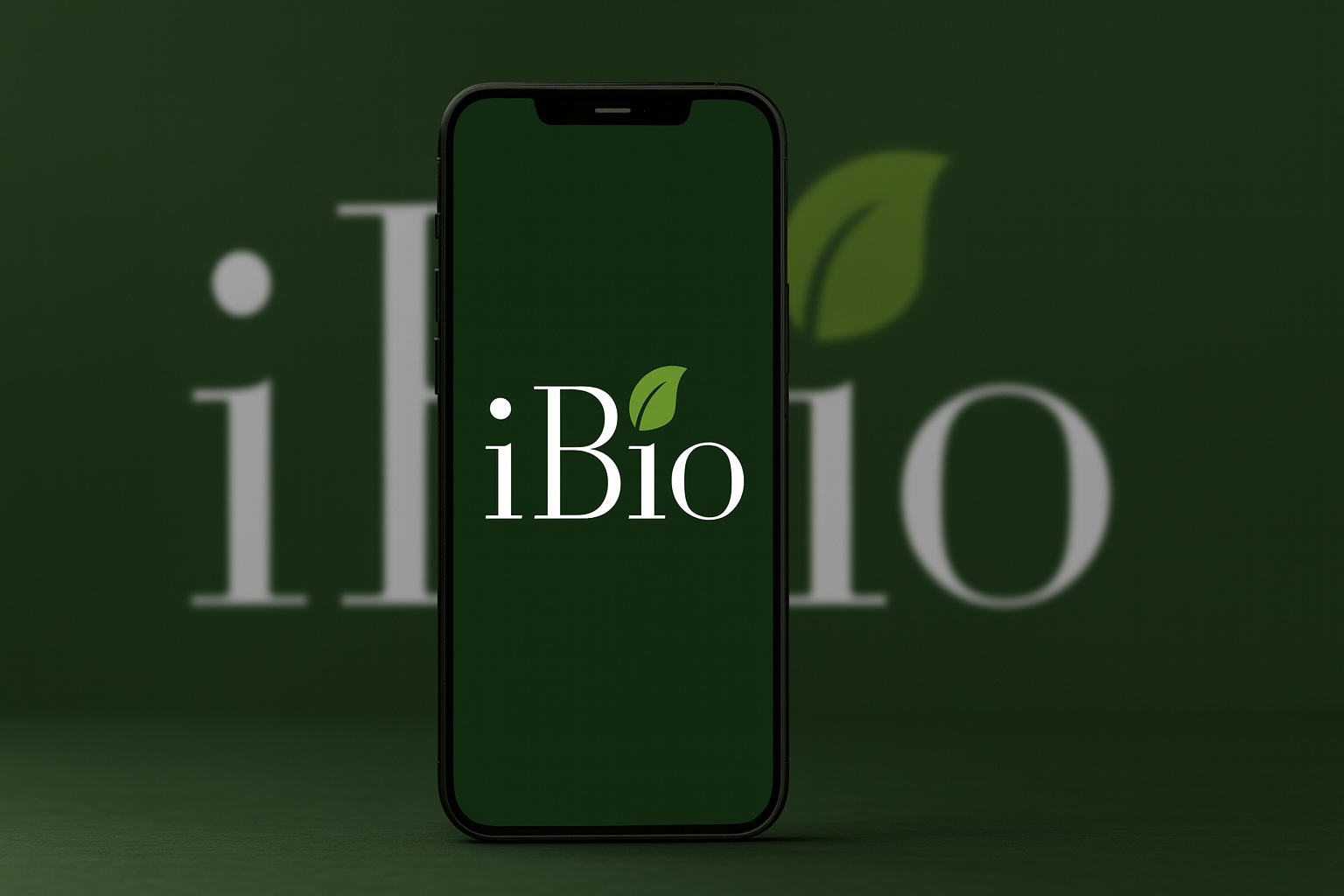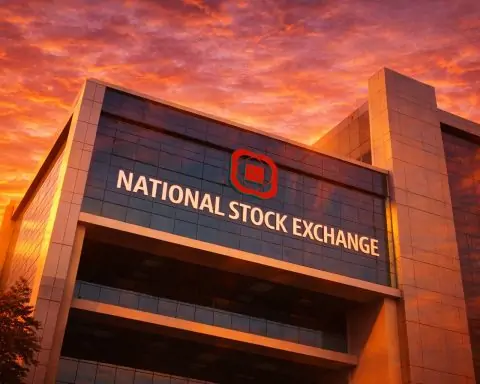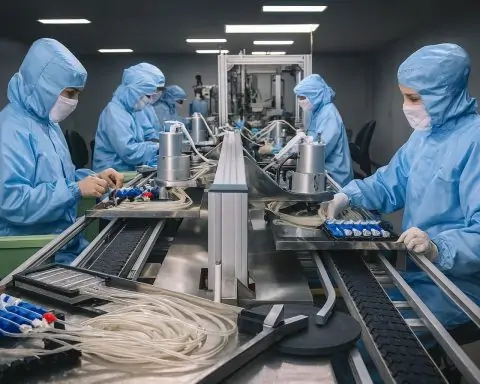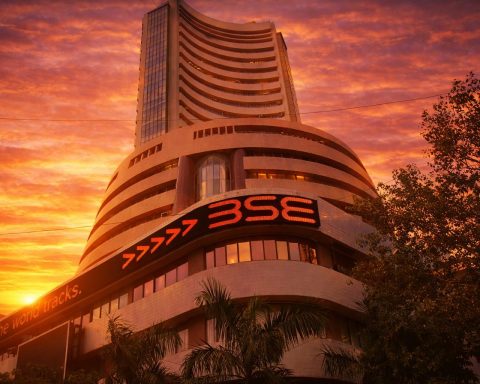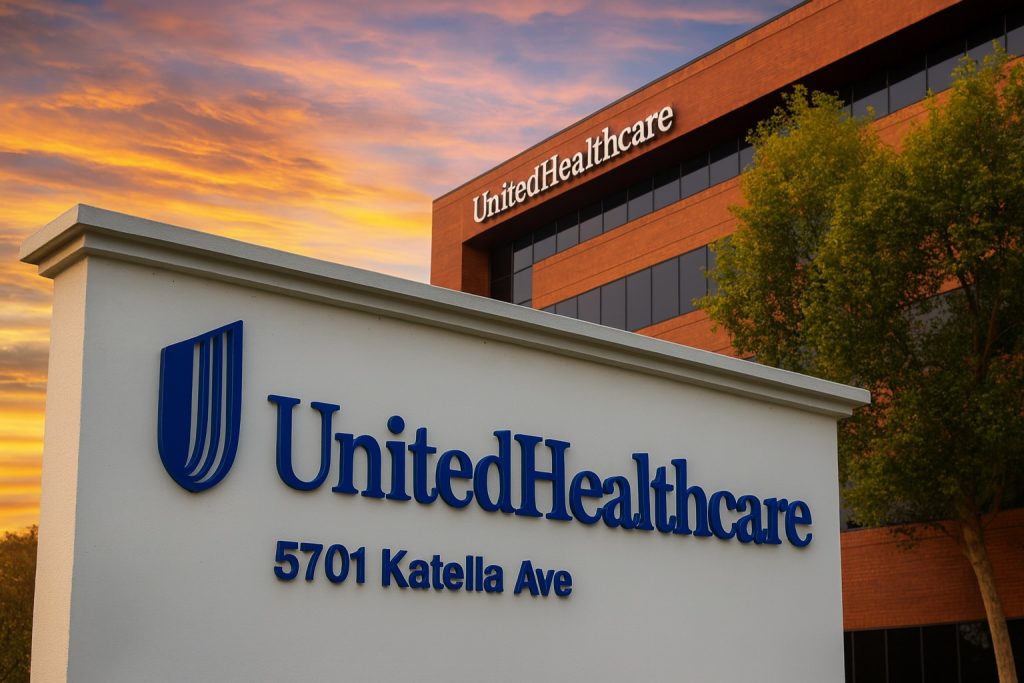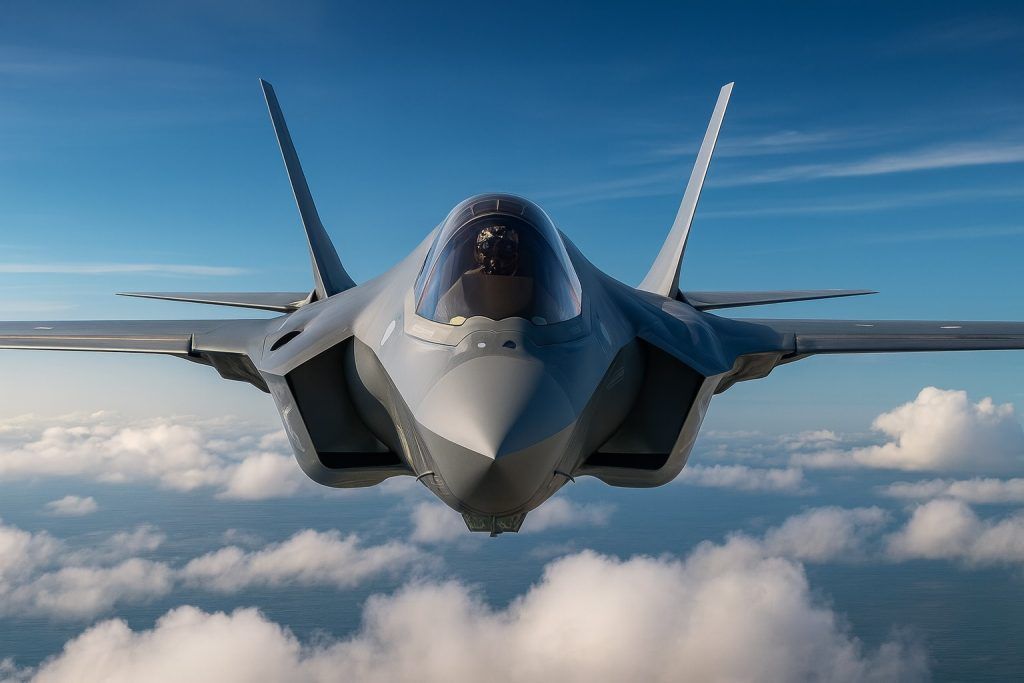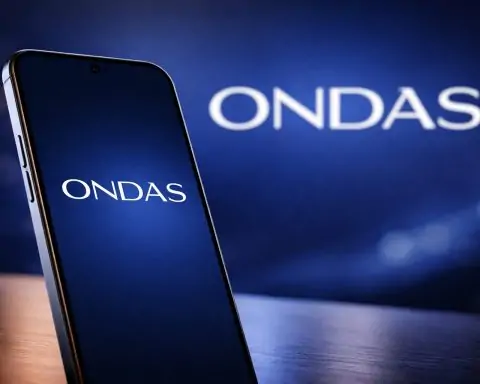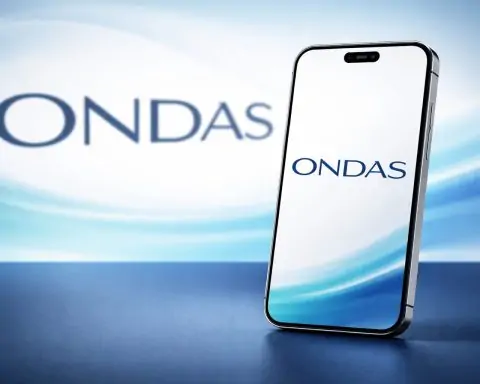- IBIO stock price (iBio, Inc.) is around $0.89 as of October 21, 2025, down roughly 63% year-to-date [1] after starting 2025 near $2.45.
- Shares spiked in recent sessions following bullish Wall Street coverage – Oppenheimer initiated coverage at “Outperform” with a $5.00 price target [2], and Leerink Partners started at “Outperform” with a $2.00 target [3], signaling confidence in iBio’s upside.
- New biotech data: iBio announced promising preclinical results for its obesity drug candidate IBIO-610, showing fat-selective weight loss without muscle loss and potential synergy with popular GLP-1 weight-loss therapies [4] [5]. The company will present this data at major conferences in November.
- Corporate moves: iBio recently raised $50 million in an offering (with another $50M possible via warrants) and uplisted to Nasdaq [6], bolstering its finances to advance key programs in cardiometabolic disease.
- Analyst outlook: Experts are optimistic about iBio’s AI-driven antibody platform, aiming to capitalize on a booming obesity treatment market that could reach $50 billion by 2030 [7]. However, at a ~$18 million market cap, iBio remains high-risk, reflecting its early-stage pipeline and heavy reliance on successful trial outcomes.
IBIO Stock Price and Recent Volatility
As of midday October 21, 2025, iBio’s stock (NASDAQ: IBIO) trades around $0.89 per share [8]. The price has been volatile in recent days. Last week, shares jumped over 20% in pre-market trading on October 17 after Leerink Partners issued a bullish initiation, although the stock later settled near $0.85 by that day’s close [9]. Even with these upticks, iBio’s stock remains well below its levels earlier this year – it began 2025 at ~$2.45 and has declined about 63% year-to-date [10]. This underperformance comes amid broader small-cap biotech volatility; by comparison, the biotech sector ETF (XBI) is up roughly 20% in 2025 [11]. iBio’s modest market capitalization (≈$18 million) and thin trading volume reflect its micro-cap status [12] [13], which can magnify price swings on news.
Wall Street Upgrades Send Optimistic Signals
Wall Street analysts have taken notice of iBio’s potential. This week Oppenheimer initiated coverage on iBio with an “Outperform” rating and a bold $5.00 price target [14]. That target implies massive upside from current levels – well over 400% above the sub-$1 share price. Just days earlier, Leerink Partners’ analyst Roanna Ruiz also launched coverage at “Outperform” with a $2.00 target [15]. These back-to-back bullish calls suggest growing confidence in iBio’s prospects. “Based on the one-year price targets offered by 4 analysts, the average target price for iBio Inc is $4.40…with a high estimate of $6.00 and a low of $1.60,” according to GuruFocus, implying an approximate 393% upside from the current price [16] [17]. The consensus recommendation from analysts now stands at “Buy/Outperform” [18], highlighting an overall positive sentiment on Wall Street.
MarketBeat similarly reports a consensus price target around $3.50 (high $5, low $2) for iBio, +291% above the latest price [19] [20]. The string of upbeat analyst coverage has acted as a catalyst for the stock. Traders bid up IBIO shares after these notes, anticipating that expert endorsements and lofty price targets could attract more investor interest. The Oppenheimer call in particular cited optimism about iBio’s obesity drug program – Investing.com noted that the firm sees significant “obesity drug potential” in iBio’s pipeline, underpinning its Outperform rating (the stock’s focus on weight-loss therapeutics aligns with a hot market theme) [21] [22]. Still, analysts temper their optimism with acknowledgment of risks given iBio’s early-stage status. For now, the new coverage has put a spotlight on this small biotech name.
Promising New Data in iBio’s Obesity Drug Pipeline
A key driver behind the recent enthusiasm is iBio’s progress in its biotech pipeline, especially in the lucrative area of obesity treatments. The company is developing IBIO-610, a first-in-class antibody targeting Activin E, and just revealed compelling preclinical results. According to TS2 Tech’s news feed, non-human primate data suggest IBIO-610 induces fat-selective weight loss while preserving lean muscle, and it may work synergistically with existing GLP-1 drugs (like Novo Nordisk’s Wegovy and Eli Lilly’s Mounjaro) to enhance weight loss [23]. iBio will be presenting this new data in early November at two major industry conferences – ObesityWeek 2025 in the U.S. and the PEGS Europe protein engineering summit [24]. “The company highlights non-human primate data suggesting fat-selective weight loss, potential support for long-term weight maintenance, and possible synergy with GLP-1 therapies,” the iBio release stated [25].
This isn’t the only promising asset in iBio’s pipeline. The company’s fiscal 2025 corporate update in September underscored progress in cardiometabolic and obesity programs [26]. Notably, lead candidate IBIO-610 (Activin E antibody) showed a 26% reduction in fat mass in obese animal models “without lean mass loss,” while IBIO-600 (a long-acting anti-myostatin antibody) demonstrated extended half-life and “dose-dependent muscle growth” in preclinical studies [27]. These results are encouraging because they hint at a potential therapy that could reduce fat (and thus weight) without the muscle loss side-effect – a significant advantage in obesity treatment. Additionally, iBio’s collaboration with AstralBio (announced in June) yielded a novel amylin receptor agonist antibody that reduced acute food intake by 60% in mice, comparable to a leading peptide drug [28] [29]. This multi-pronged approach – tackling obesity via different biological pathways (Activin E, myostatin, amylin) – positions iBio in the vanguard of next-generation weight-loss therapies.
Corporate Developments and Market Context
In tandem with its R&D progress, iBio has shored up its financial footing and corporate structure this year. In late August, the company closed a $50 million public offering to fund its programs [30] [31]. The financing involved warrants that, if fully exercised, could inject an additional $50 million, effectively doubling the proceeds for iBio’s pipeline advancement [32] [33]. The raise was led by notable biotech investors (including Balyasny Asset Management) and underwritten by major investment banks Leerink Partners, LifeSci Capital, and Oppenheimer [34] – a vote of confidence from life science financiers. Crucially, iBio also uplisted its stock to the Nasdaq market this year [35], migrating from the NYSE American. This move is expected to improve the stock’s visibility and liquidity, as Nasdaq listing often attracts more institutional and retail attention. The company also expanded its leadership team with industry veterans in 2025 [36], aiming to steer its drug candidates through clinical development.
Broader market trends provide important context for iBio’s story. The global anti-obesity drug market is surging, sparked by breakthrough GLP-1 analog treatments that have delivered dramatic weight loss for patients. Morgan Stanley analysts project the obesity medication market could reach about $50 billion in annual sales by 2030 [37], up from only a few billion today. This “gold rush” mentality has big pharma and investors hunting for the next obesity therapy breakthroughs [38] [39]. As a tiny player focusing on innovative antibodies for weight loss, iBio is attempting to ride this wave. Its strategy leverages AI-guided antibody discovery – iBio is described as “a biotechnology innovator providing end-to-end CDMO services and AI-driven solutions for biotherapeutics development” [40] – to rapidly identify and optimize drug candidates. This tech-driven approach could potentially shorten development timelines or improve success odds, a point that bullish analysts often highlight [41].
That said, investors remain aware of the substantial risks. iBio is still preclinical (none of its drugs have entered human trials yet), and the company continues to incur losses (≈$1.75 per share loss in FY2025, though an improvement from the prior year) [42]. Moreover, iBio relies on certain licensed technologies for its programs – a recent analysis cautioned that “iBio’s future [is] at risk [due to] reliance on third-party licenses for key product candidates” [43]. If any licensing issues arise or if competitors develop better solutions, iBio’s long-term prospects could be challenged. With only around $0.4 million in annual revenue (largely from its CDMO services) and heavy R&D spending [44] [45], the company will likely need additional capital before any product reaches market. This means dilution and stock volatility could continue in the near term.
Outlook: High Hopes Tempered by Caution
Looking ahead, iBio’s trajectory will depend on clinical milestones. Investors and analysts will be watching for the company to advance IBIO-610 or other candidates into human trials (an Investigational New Drug application filing could be a next key catalyst). Any indication of efficacy in humans, especially on par with leading obesity drugs, would be a game-changer for this micro-cap stock. In the interim, expert sentiment is notably upbeat – two firms now rate iBio a buy-equivalent, and Chardan Capital has maintained a Buy with a $5 target on the stock through mid-2025 [46]. This suggests a belief that iBio’s current valuation deeply discounts its potential. The company’s focus on obesity and cardiometabolic disease, areas of intense medical need and commercial interest, gives it a shot at outsized rewards if its science delivers.
However, it bears repeating that risks are elevated. Competitive landscape: many biotech and pharma companies are racing to develop obesity treatments, from peptide hormones to gene therapies, so iBio will need to differentiate its approach. Financial overhang: with shares under $1, iBio may face Nasdaq compliance issues or further dilution if additional fundraising is required. And macro factors – for example, rising interest rates or shifts in biotech investor sentiment – could affect small-cap biotechs broadly. As a result, even bullish analysts classify IBIO as an “outperform” rather than a sure thing, acknowledging uncertainty.
Bottom line: iBio, Inc. has captured renewed attention on the back of encouraging drug data and vocal Wall Street support. The stock’s recent swings underscore both the speculative excitement and the volatility inherent in early-stage biotech investing. For investors, the coming months will be crucial to see if iBio can convert its lab successes into clinical progress. In a best-case scenario, this tiny biotech could ride the obesity drug boom to significant heights – a prospect reflected in that $5 analyst target – but it will need to execute flawlessly to justify the current optimism [47] [48]. As of late October 2025, iBio stands at a pivotal juncture, with high hopes tempered by the realities of drug development. Investors should stay tuned as the story unfolds, keeping an eye on conference presentations, trial news, and any further analyst commentary in this fast-evolving situation.
Sources: Recent company press releases and summaries via TS2/StockTitan [49] [50]; Yahoo Finance/Simply Wall St [51]; GuruFocus analyst coverage [52] [53]; MarketBeat consensus data [54] [55]; Reuters and Bloomberg industry reports [56]; and other publicly available stock analysis. All information is current as of October 21, 2025.
References
1. www.marketbeat.com, 2. www.gurufocus.com, 3. www.gurufocus.com, 4. www.stocktitan.net, 5. www.stocktitan.net, 6. www.stocktitan.net, 7. www.reuters.com, 8. www.marketbeat.com, 9. www.marketbeat.com, 10. www.marketbeat.com, 11. finance.yahoo.com, 12. www.marketbeat.com, 13. www.reuters.com, 14. www.gurufocus.com, 15. www.gurufocus.com, 16. www.gurufocus.com, 17. www.gurufocus.com, 18. www.gurufocus.com, 19. www.marketbeat.com, 20. www.marketbeat.com, 21. www.reuters.com, 22. www.reuters.com, 23. www.stocktitan.net, 24. www.stocktitan.net, 25. www.stocktitan.net, 26. www.stocktitan.net, 27. www.stocktitan.net, 28. www.stocktitan.net, 29. www.stocktitan.net, 30. www.stocktitan.net, 31. www.stocktitan.net, 32. www.stocktitan.net, 33. www.stocktitan.net, 34. www.stocktitan.net, 35. www.stocktitan.net, 36. www.stocktitan.net, 37. www.reuters.com, 38. www.reuters.com, 39. www.reuters.com, 40. www.stocktitan.net, 41. www.gurufocus.com, 42. swingtradebot.com, 43. www.tipranks.com, 44. www.stocktitan.net, 45. www.stocktitan.net, 46. www.gurufocus.com, 47. www.gurufocus.com, 48. www.marketbeat.com, 49. www.stocktitan.net, 50. www.stocktitan.net, 51. www.marketbeat.com, 52. www.gurufocus.com, 53. www.gurufocus.com, 54. www.marketbeat.com, 55. www.marketbeat.com, 56. www.reuters.com
